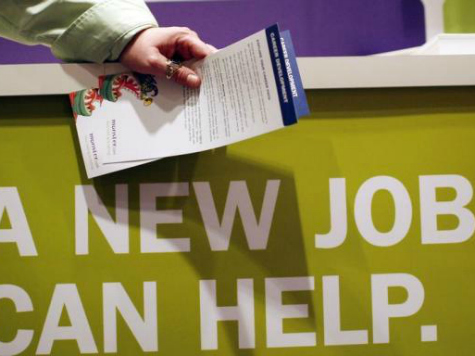The Commerce Department reported GDP grew at a disappointing 0.1 percent annual rate in the first quarter, less than 2.6 and 4.1 percent recorded the prior two periods. Overall, it appears 2014 may not be the breakout year President Obama and many Wall Street forecasters predicted, boding poorly for jobs creation.
A colder than normal winter slowed consumer spending, somewhat, and business investment in new equipment, structures and information technology plunged; however factors other than weather dragged on growth too.
Sequestration and the longer-term shift in federal spending from activities that support growth–infrastructure, research and development and the like–toward social welfare–health care subsidies, food stamps and the like–are depressing federal and state spending’s contribution to investment and productivity and ultimately, dragging down aggregate demand and growth.
The harsh winter slowed residential sales and construction, and recent builder surveys indicate new home purchases may not rebound as strongly this spring and summer as once expected.
Young, first time buyers are caught in a vice: lower incomes than their parents enjoyed when entering the labor force and heavy college debts. Consequently, as many finally leave their parents’ homes to set up households, more chose apartments. Construction costs associated with these are less than the suburban homes their parents might have purchased, and create fewer multiplier effects in the furniture, appliance and home improvement sectors. Also, apartment activity in existing cities and suburbs likely instigates less complimentary commercial development than new suburban subdivisions.
It’s time for the Obama Administration to simply pay the piper for using student loans to prop up demand and keep young adults out of the job market to inflate growth and suppress the unemployment rate over the last five years. Fewer housing starts and more focus on lower cost units do not bode well for growth.
The boost to consumer spending provided by recovering existing home values in 2013 should slow. Speculators are purchasing fewer foreclosed properties, and higher mortgage rates raise monthly payments and reduce the prices buyers can afford.
Similarly, monthly tallies of new vehicle purchases hit a plateau last summer, when those averaged an annual pace close to 16 million units. Since then sales have bounced around and not much improved. Now those are likely to rise again, but too much of Detroit’s recent profitability was premised on replenishing a vehicle fleet that grew old and too fuel inefficient during the long financial crisis, easier credit conditions than are likely to persist going forward, and high mark ups on option-laden vehicles. Those have run their course, and recent downward pressures on transactions prices and profits will persist, limiting the auto sector’s contribution to growth.
Preliminary data indicate the inflation adjusted trade deficit likely increased sharply in the first quarter. The cheaper yen and yuan engineered by Tokyo and Beijing, along with similar currency policies elsewhere in Asia, disadvantage U.S. manufacturers across the board and limit jobs creation. Absent a more credible strategy from the Obama Administration to counter this protectionism, Asian governments are happy to export unemployment to the United States.
Similarly, the Obama Administration’s unwillingness to approve drilling permits off the Atlantic and Pacific coasts and in the Eastern Gulf exacerbates U.S. import dependence and increases global environmental risks by concentrating drilling too much in developing countries. These increase the U.S. trade deficit and tax GDP growth and employment.
Halving the trade deficit by countering currency manipulation and developing more U.S. oil could easily add 1 to 2 percentage points to annual U.S. GDP growth, and create 4 to 5 million more jobs over 3 years.
Overall, consumer spending surged to 3.3 percent in the fourth quarter but pulled back to about 3.0 percent in the first quarter, and it may not improve a lot on a sustained basis for a long time. Similarly, surging imports and slow growing exports will likely plague the economy through the balance of this year and next.
Coupled with constraints on growth in housing and autos, those factors may keep GDP growth pinned below 3 percent and jobs creation close to 200,000 per month, instead of the 350,000 needed to lower unemployment to pre financial crisis levels.
Peter Morici is an economist and business professor at the University of Maryland, national columnist and five-time winner of the MarketWatch best forecaster award. He tweets @pmorici1

COMMENTS
Please let us know if you're having issues with commenting.